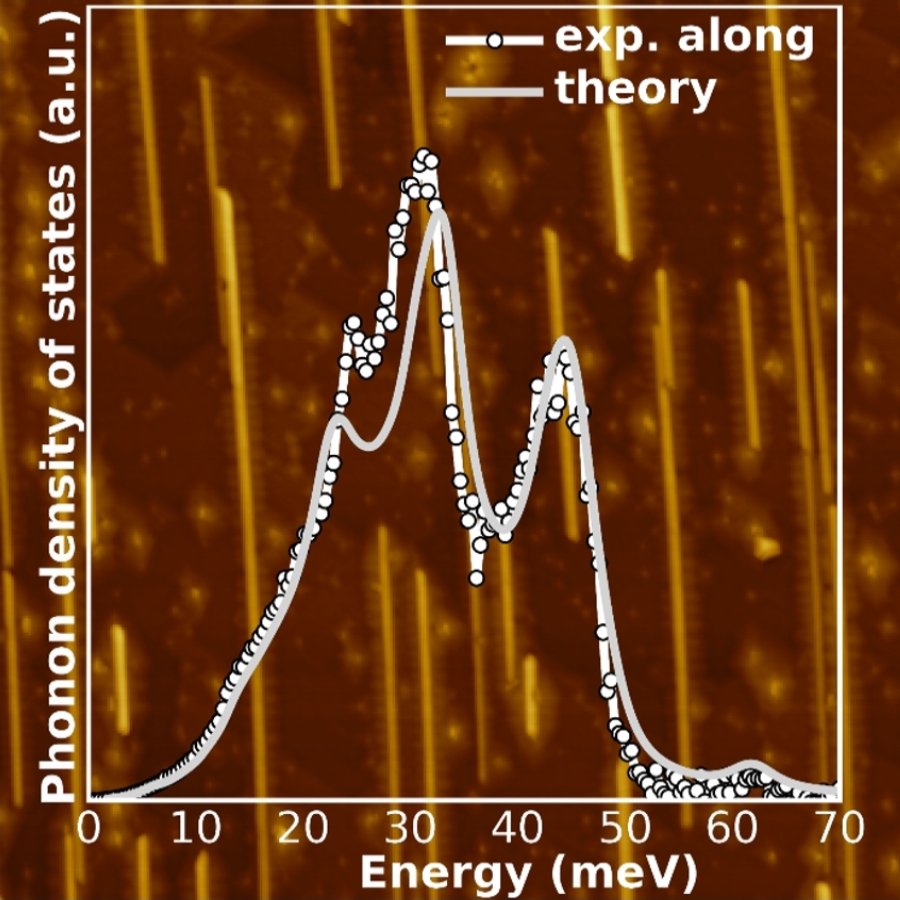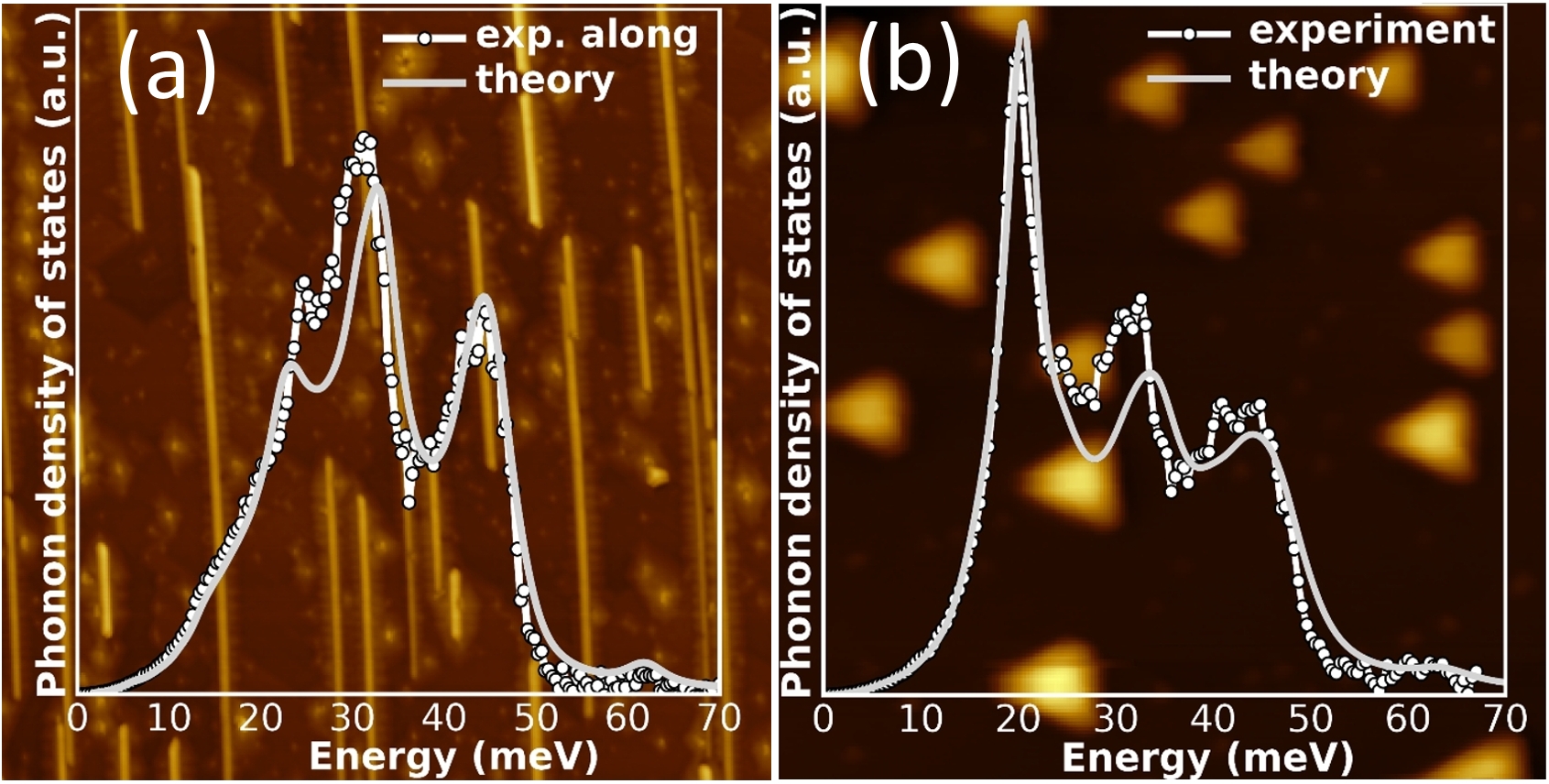Iron silicide nanostructures for future nanoelectronics
Self-organized silicide nanostructures represent potential building blocks for future nanoelectronic device applications. In such nanostructures, the lattice vibrational waves (phonons) deviate drastically from those in bulk crystals, giving rise to anomalies in thermodynamic, elastic, electronic, and magnetic properties. For potential device applications, a thorough understanding of the physical properties of these materials thus requires comprehensive investigation of the lattice dynamics as a function of the nanostructure size.
We have performed a systematic lattice dynamics study of iron silicide (FeSi2) nanowires and nanoislands, forming the metastable, surface-stabilized α-phase, which are embedded in-plane into the silicon surface. The average width of the nanowires ranges from 24 to 3 nanometers, and their length ranges from several micrometers to about 100 nanometers. The Fe-partial phonon density of states (PDOS), obtained by nuclear inelastic scattering, exhibits a broadening of the spectral features with decreasing nanowire width. The experimental data obtained along and across the nanowires reveal a pronounced vibrational anisotropy which originates from the specific orientation of the tetragonal α-FeSi2 unit cell on the Si(110) surface. The results from first-principles calculations are fully consistent with the experimental observations and allow for a comprehensive understanding of the lattice dynamics of endotaxial silicide nanowires.
| Fe-partial PDOS of α-FeSi2 nanostructures on silicon. The corresponding AFM images are shown in the background: (a) α-FeSi2 nanowires on the Si(110) surface, (b) large α-FeSi2 nanoislands on the Si(111) surface. |
In the case of metastable α-FeSi2 nanoislands, the Fe-PDOS exhibits pronounced damping and broadening of the spectral features with decreasing average island height. First -principles calculations allow the disentanglement of the contribution of the xy- and z-polarized phonons to the experimental PDOS. Modelling of the experimental data with the theoretical results reveals enhanced damping of the z-polarized phonons for islands with average sizes below 10 nm. This phenomenon is attributed to the fact that the low-energy z-polarized phonons couple to low-energy surface/interface vibrational modes. The thermodynamic and elastic properties obtained from the experimental data show a pronounced size-dependent behaviour.
Further reading
J. Kalt, M. Sternik, B. Krause, I. Sergueev, M. Mikolasek, D.G. Merkel, D. Bessas, O. Sikora, T. Vitova, J. Göttlicher, R. Steininger, P.T. Jochym, A. Ptok, O. Leupold, H.-C. Wille, A.I. Chumakov, P. Piekarz, K. Parlinski, T. Baumbach and S. Stankov, Lattice dynamics of endotaxial silicide nanowires, Phys. Rev. B 102, 195414 (2020), DOI: https://doi.org/10.1103/PhysRevB.102.195414
J. Kalt, M. Sternik, B. Krause, I. Sergueev, M. Mikolasek, D. Bessas, O. Sikora, T. Vitova, J. Göttlicher, R. Steininger, P. T. Jochym, A. Ptok, O. Leupold, H.-C. Wille, A. I. Chumakov, P. Piekarz, K. Parlinski, T. Baumbach and S. Stankov, Lattice dynamics and polarization-dependent phonon damping in α-FeSi2 nanostructures, Phys. Rev. B 101, 165406 (2020), DOI: https://doi.org/10.1103/PhysRevB.101.165406


